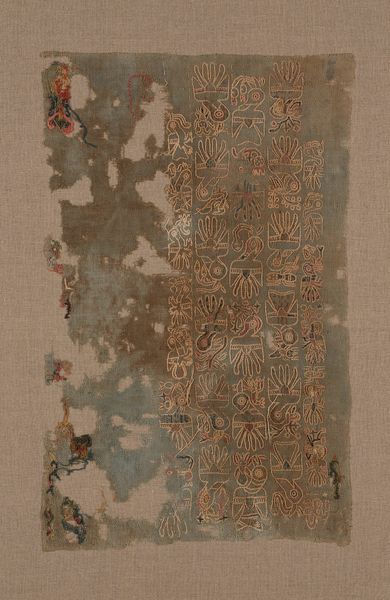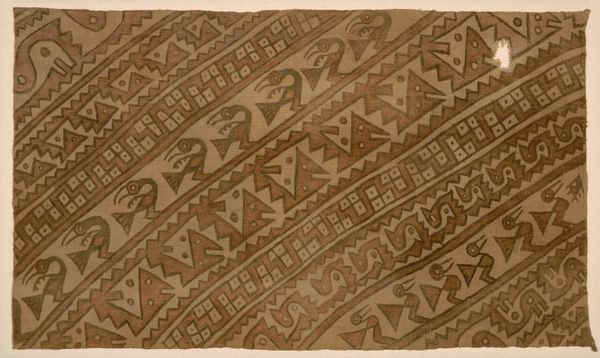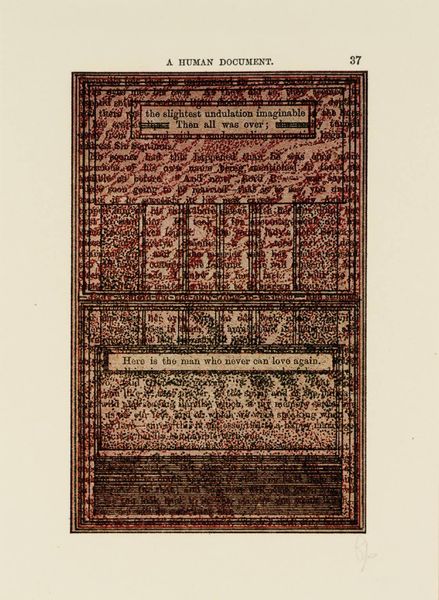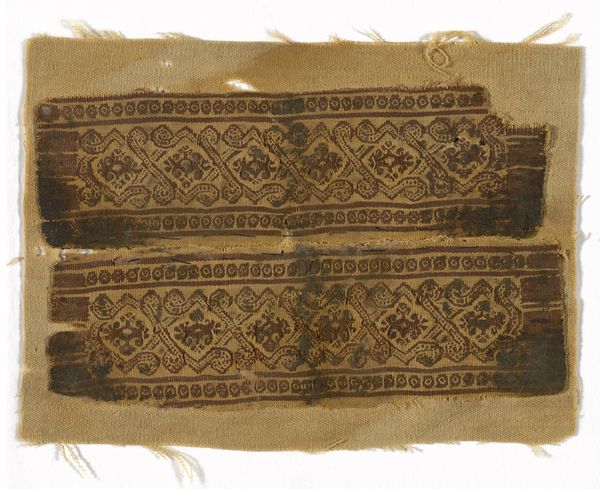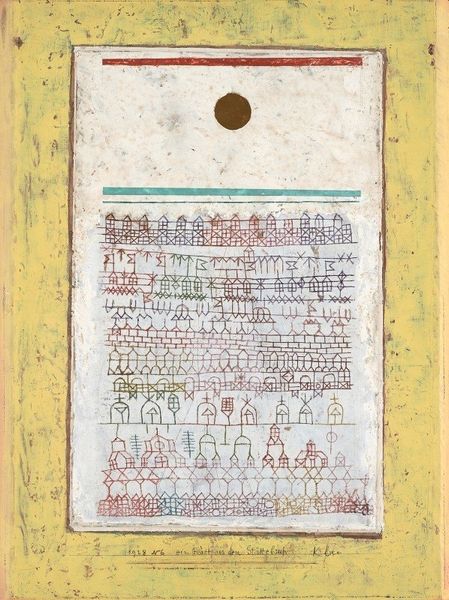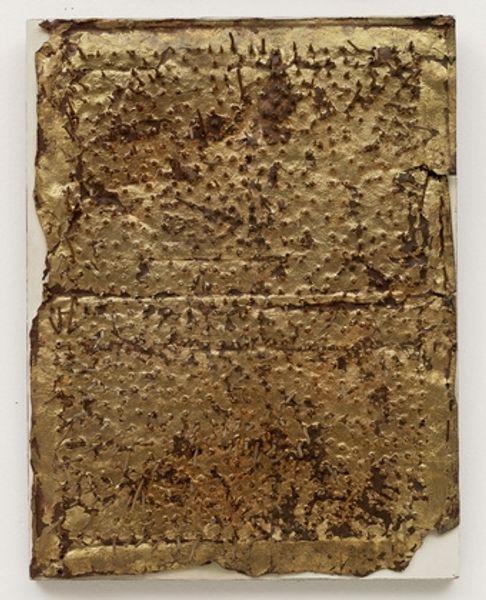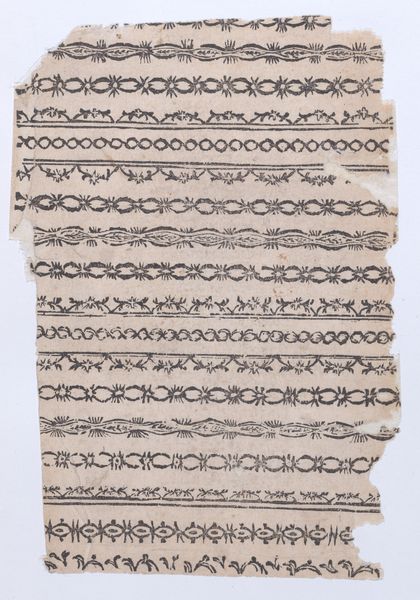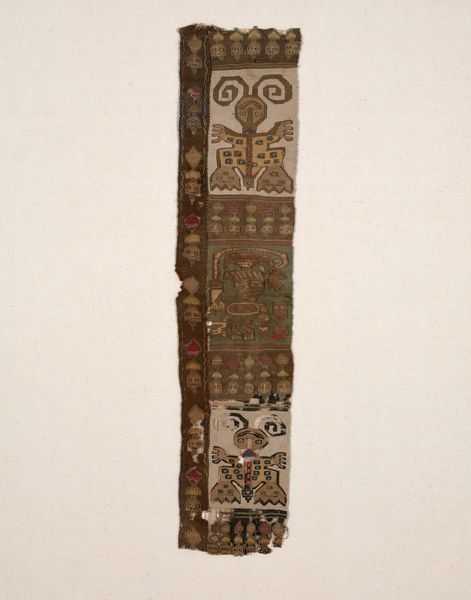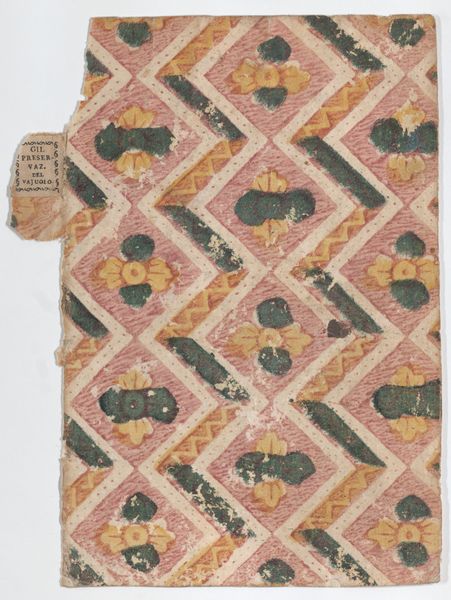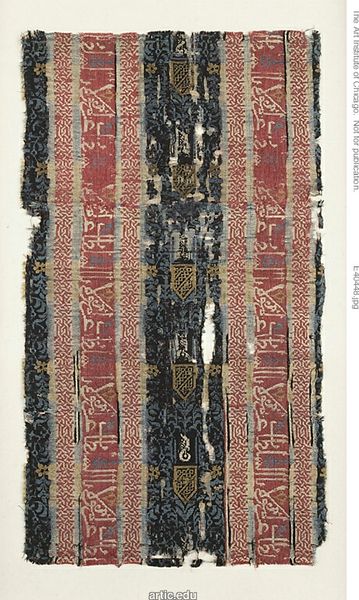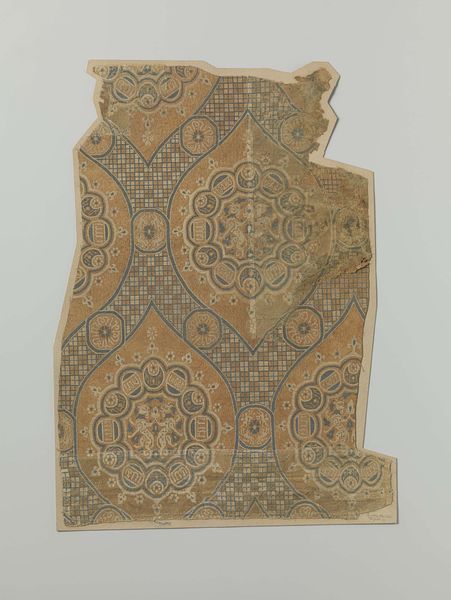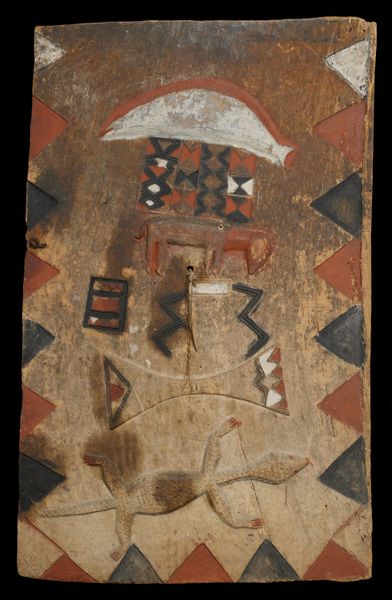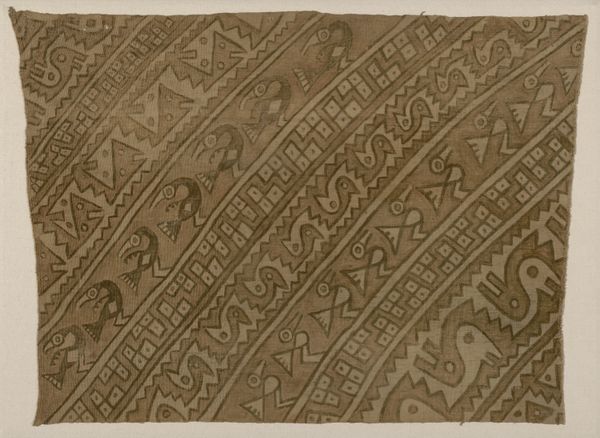
fibre-art, weaving, textile
#
fibre-art
#
weaving
#
textile
#
geometric
#
repetition of pattern
#
indigenous-americas
Dimensions: 69.5 × 47 cm (27 3/8 × 18 1/2 in.)
Copyright: Public Domain
Editor: This textile Panel, from the Lambayeque culture, dated somewhere between 1000 and 1476, is really striking. The repetition of those geometric shapes is almost hypnotic. What sort of cultural or symbolic meaning might have been embedded in these choices? Curator: Repetition, especially in pre-Columbian art, wasn't just decorative. Think of weaving as a form of language, where repeated motifs act as verses in a song or patterns of memory etched into the cultural psyche. Each geometric element – the stepped pyramids, the meandering lines – resonates with specific, often esoteric, meanings. What do they evoke for you? Editor: I can see how the pyramid shapes might be connected to religious architecture or the social hierarchy of the time. Is it fair to see those meandering lines as life's pathways? Curator: Perhaps, or think about the labyrinth: pathways in which your identity or beliefs may become lost! Indigenous American textile traditions are rife with dualities. Considering its function - potentially ceremonial clothing, perhaps – imagine how the wearer embodies these powerful symbols through movement and presence. How might wearing something like this change a person’s perception of their place in the cosmos? Editor: That adds another layer of meaning. It’s more than just decoration; it's a kind of performance. So this panel really worked as a conduit for cultural values! Curator: Exactly. Objects like these link us to ancestors; they remind us that memory is never static, but a woven tapestry continually reshaped by context and perspective. Editor: This makes me appreciate textiles so much more now! Thanks for opening my eyes to the symbols embedded within it!
Comments
No comments
Be the first to comment and join the conversation on the ultimate creative platform.
